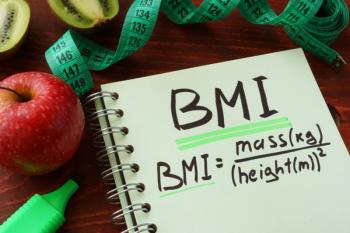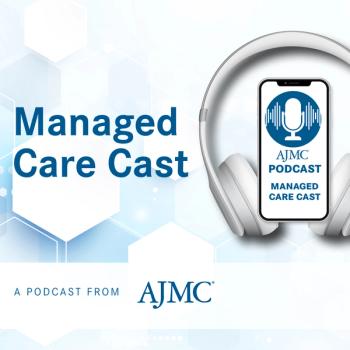
Clinical Outcomes Poorly Understood Among Rare Subset of Patients With CRS, Immunoglobulin Deficiency
The current literature is lacking on outcomes among patients with comorbid chronic rhinosinusitis (CRS) and immunoglobulin deficiencies, especially for those who must use surgery to manage their CRS.
Clinically meaningful improvements on the 22-item Sino-Nasal Outcome Test (SNOT-22) were seen among patients with comorbid
Authors published their findings in
Patients were matched 1:2 into 2 cohorts, CRS and immunoglobulin deficiency (n = 13) and CRS only (n = 26), with matching criteria being age, sex, CRS phenotype, and preoperative Lund-Mackay Score. Revision surgery rates, time to revision surgery, and SNOT-22 changes were then compared. Immunoglobulin deficiency was diagnosed per reduced serum levels of 1 or more of several immunoglobulins: immunoglobulin A (IgA), IgE, IgG, and IgG I-V subclasses. Most patients in each group were female (61% each); the mean (SD) ages were equivalent, at 44.2 (15) in the study group and 43.7 (14) in the control group; CRS with nasal polyps was the most common disease type requiring ESS (62% each).
Overall, for those undergoing ESS, mean preoperative Lund-Mackay Scores were 13.8 (3.0) for the patients with immunoglobulin deficiency and 12.9 (3.2) for the patients in the control group. Follow-up time was almost twice as long in the study group as it was in the control cohort: 44 (36.7) vs 24.0 (22.5) months.
Fewer patients among those with immunoglobulin deficiency had complete ESS (69% vs 92%) and concurrent
For those who required revision surgery, there was less time between initial and revision surgeries for the patients with comorbid CRS and immunoglobulin deficiency (n = 4) than there was for the patients who did not have immunoglobulin deficiency (n = 3): 41.5 (22.9) vs 46.7 (31.4) months (P = 1.00).
Among the patients with immunoglobulin deficiency, 4 had common variable immunodeficiency; 5, IgG deficiency; 3, unspecifed hypogammaglobulinemia; and 1, IgE deficiency.
Preoperative and postoperative SNOT-22 data were available on 10 patients with immunoglobulin deficiency and 21 control patients. A small gap was seen in the mean preop scores between the groups, at 54.7 (25.3) in the study group and 51.0 (22.9) in the control group, but this was much larger in the postop setting: 42.6 (24.8) vs 26.0 (22.6). Mean changes were –12.1 (26.0) and –25.0 (13.4) (P = .218), respectively, in total SNOT-22 score, and similar trends were seen in several SNOT-22 subdomains:
- Rhinologic symptoms: –3.3 (7.3) vs –9.1 (5.3) (P = .126)
- Extranasal rhinologic symptoms: –1.4 (4.3) vs –4.1 (2.9) (P = .145)
- Ear/facial symptoms: –1.7 (4.8) vs –4.7 (4.0) (P = .294)
- Psychological dysfunction: –5.3 (11.2) vs –7.2 (6.3) (P = .580)
- Sleep dysfunction: –2.8 (5.6) vs –4.0 (4.5) (P = .580)
These findings were determined to be statistically significant by the investigators.
“This study represents one of the first and largest case-control studies to investigate ESS outcomes in patients with immunoglobulin deficiency,” they concluded. “The results of this study suggests that patients with immunoglobulin deficiency experience clinically meaningful improvement in SNOT-22 scores after ESS, but may have higher revision rates than other patients with CRS.”
Still, they suggest additional investigations in this area because of several limitations on their findings. For example, the control group was not screened for immunoglobulin deficiency, so those participants could have had subclinical immunoglobulin deficiency; data on endoscopy score, acute sinus or pulmonary exacerbations frequency, and antibiotic use were not included; and the shorter follow-up time in the control vs the study group.
References
1. Samargandy S, Grose E, Yip J, Lee JM. Endoscopic sinus surgery outcomes in patients with chronic rhinosinusitis and immunoglobulin deficiencies. J Otolaryngol Head Neck Surg. Published online June 29, 2023. doi:10.1186/s40463-023-00648-3
2. Khan AH, Reaney M, Guillemin I, et al. Development of Sinonasal Outcome Test (SNOT-22) domains in chronic rhinosinusitis with nasal polyps. Laryngoscope. 2022;132(5):933-941. doi: 10.1002/lary.29766
Newsletter
Stay ahead of policy, cost, and value—subscribe to AJMC for expert insights at the intersection of clinical care and health economics.














































